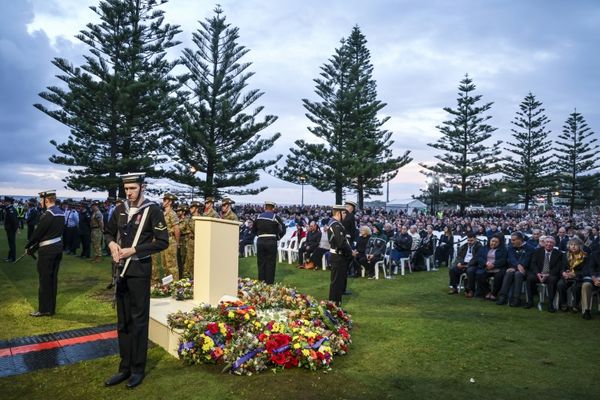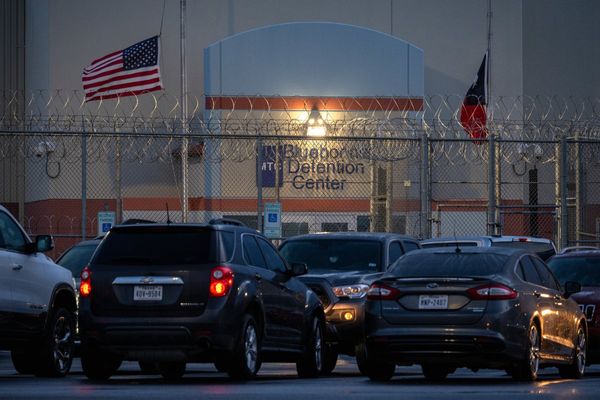
What dollar value can be put on the vigorous, productive years of a human life? In Kathleen Folbigg’s case it is most of her 30s, her 40s and half her 50s.
All stripped from her due to a miscarriage of justice at the hands of the state – much of it down to prosecutorial mishaps and blind ignorance about the development of genetic science.
Wrongful convictions have been going on for a long time, yet the machinery to deal with them and the determination of compensation remains painfully dated, arbitrary and inconsistent.
Can any amount of compensation make up for the vilification – as the most “hated woman in Australia” – and the deprivation of Folbigg’s liberty, spent entirely in the time warp of maximum-security prisons?
The scale of the law turning on itself is so shocking and yet, to put it right, money is all we have.
In Folbigg’s case, she has been pardoned by the state for the wrongful conviction in May 2003 for killing her four children.
The science has caught up with that tragedy, yet the conviction still lingers. She will have to go to the court of criminal appeal to get it removed or, as the lawyers like to say, quashed – a conviction and incarceration that should never have happened.
Folbigg is in legal limbo, pardoned but unquashed. Once the conviction is removed she may sue for damages or compensation or take other civil actions.
As we’ve seen with other blighted convictions, the state may offer her an ex gratia payment – which does not arise from a legal obligation, rather it’s a gift arising from a sense of moral obligation.
Henry Keogh entered the South Australian criminal justice system after the drowning death in the bath of his fiancee in March 1994. He served 19 and a half years in the slammer for murder and after innumerable twists and turns of the legal system the court of criminal appeal, taking into account flawed evidence from a pathologist, ordered a retrial, which never happened.
Strictly speaking, he had not been acquitted or pardoned and he did not pursue compensation. Keogh went to the horse’s mouth instead and accepted an ex gratia payment of $2.5m from the South Australian government in 2018 – peanuts for nearly 20 years of porridge for a wrongful conviction.
David Eastman, wrongly convicted and sentenced in the ACT for the shooting murder of assistant federal police commissioner Colin Winchester, served almost 20 years.
The territory government offered him a conditional ex gratia payment of $3m – on the condition he was not to sue.
Eastman rejected that offer and took a case in the supreme court under the ACT’s human rights legislation. He was awarded damages of $7.02m .
The state thought his time out of circulation was only worth $3m . Under a human rights assessment it more than doubled.
This sort of human rights regime is not available in NSW, so if Folbigg were to accept an ex gratia payment it would be a figure plucked out of the air by politicians.
Not all comparisons are helpful because each case is unique and, in Folbigg’s instance, there are special circumstances and a hefty inflation factor.
In New Zealand there is a formal scale of compensation offered for claimants who have been wrongfully convicted. It calculates $NZ150,000 for each year held in custody, in addition to $NZ100,000 a year for loss of livelihood. There is also up to $NZ50,000 for post-release readjustment and payment of some costs, with the capacity to adjust the total amount upwards or downwards by $NZ150,000.
At a base rate on the New Zealand scale, Folbigg would be eligible for at least $5m in compensation, without costs or a payment for readjustment expenses.
There are troubling aspects about the conduct of her trial in April and May 2003. Snr crown prosecutor Mark Tedeschi said the accused’s diaries were “the strongest evidence the jury could possibly have for Ms Folbigg having murdered her four children”.
The diaries were cherrypicked and put forward as a “virtual” admission of her guilt. The interpretation offered to the jury was much later contradicted by others, including psychotherapist Dr Kamal Touma who found there was nothing in the diaries or from her discussions with Folbigg that indicated she harmed her children.
Tedeschi’s prosecution method has been criticised in other wrongful conviction cases, including the Gordon Wood appeal and also that of Tim Anderson, arising from the bombing of the Hilton hotel in 1978.
The then NSW chief justice Murray Gleeson remarked that Tedeschi’s prosecution was conducted inappropriately and unfairly.
Folbigg brought numerous unsuccessful appeals before she engaged with the post-conviction review process in 2015. Even then, the expert advice from pathologists was that Folbigg did not kill her children.
The attorneys general at the time, Gabrielle Upton and Mark Speakman, took an inordinate time – more than three years – to act on the petition for review.
Former chief judge of the NSW district court Reg Blanch conducted the case review in 2019. He rejected the genetic and medical evidence pointing to natural causes of death for each child and concluded that the evidence gathered by the inquiry reinforced her guilt.
Blanch had also been the NSW director of public prosecutions and had appointed Tedeschi as deputy senior crown prosecutor. This is not to suggest that the commissioner’s report was influenced by his previous professional connection to Tedeschi, yet it illustrates the overlap of roles and functions in the mechanisms that handle special reviews – including the role of the attorney general who has oversight and ministerial responsibility for the operations of the DPP’s office.
Central Coast solicitor Rhanee Rego in 2021 submitted a petition requesting the state governor Margaret Beazley exercise the royal prerogative of mercy and pardon Kathleen Folbigg.
The first calmodulin (CALM) variant was discovered in humans in 2012. CALM2 G114R was discovered in Kathleen and her children in late 2018. This was the basis of the petition for mercy.
After the Blanch inquiry concluded, 27 scientists globally functionally tested the CALM2 G114R variant and found that it is indeed heart-stopping, as they predicted in 2019.
This research was published in 2020.
Rego is also a PhD student at the University of Newcastle, working on a critical analysis of the post-conviction review mechanisms in NSW. In a recent paper she points to the institutional failings in the Folbigg case – by the legal system and the conflicts at the political level – and urges the establishment of an independent criminal case review commission.
The post-conviction struggle to free Kathleen Folbigg had been going on since 2015 under a system that is not independent, transparent or accountable.
An independent Criminal Case Review Commission does not exist anywhere in Australia. It was adopted in the UK in 1997, and has seen 813 cases referred to the appeal courts. Of those, about 70% of the appeal reviews have been successful.
In a broad sense, post-conviction review in NSW and across Australia is not independent, transparent or accountable. Maybe the great legacy of Folbigg’s case would be a CCRC to handle the next generation of wrongful convictions.
Richard Ackland writes at 500Words.com.au







